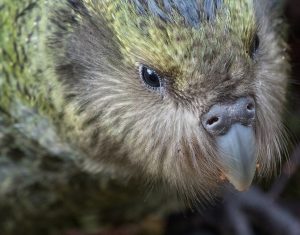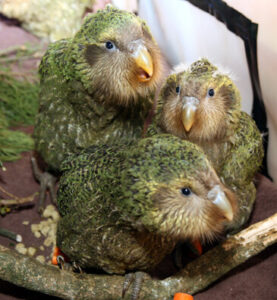 The threat of extinction looms large over many species. We’re all uncomfortably aware that there are more than a few species of parrots near the extinction threshold, a line that we would rather not cross. Causality outlooks for many species range from disturbed habitats, climate disruption, invasive predators, and poachers who have helped deplete the natural population of a community of highly prized exotic birds. Scientists, conservationists, universities, and governments have worked hand in hand to help secure perfect solutions to the declining numbers of our birds.
The threat of extinction looms large over many species. We’re all uncomfortably aware that there are more than a few species of parrots near the extinction threshold, a line that we would rather not cross. Causality outlooks for many species range from disturbed habitats, climate disruption, invasive predators, and poachers who have helped deplete the natural population of a community of highly prized exotic birds. Scientists, conservationists, universities, and governments have worked hand in hand to help secure perfect solutions to the declining numbers of our birds.
DNA Sequencing To Boosts Numbers
One method of protection that bypasses the work of actual hands-on difficult work with existing parrots is that of DNA sequencing. Teams of scientists that are invested in the protection of birds (and other life that are being threatened) have taken to the internal coding of genetics to produce a pattern of information that could lead to a better understanding of the “at risk of extinction’” parrots. With this information, conservationists can more accurately put a finger on disease susceptibility, discover resistance to environmental fluctuations, and even how eggs respond in relation to where they are located.

Recently, Dr. Peter Dearden, a biochemist operating from the University of Otago (Dunedin, New Zealand), sequenced the DNA of many of the Kākāpō parrots in existence. This represents 169 of the birds with both living and stored samples accessed for the project. His collected genomic dataset for the parrot species could become essential in the survival probability of the Kākāpō. As the datasets are built upon with more DNA sequences of new chicks and others located but not sequenced, the reality of improved survivability could become a catalyst for possible uninhibited growth.
This is like having a vast database of direct-line medical information that can be referenced for probabilities in the occurrence of diseases for the human body. With such information available for conservationists, the Kākāpō parrot community gained a new tool in the continued efforts to increase its low population. The tool will be used to scan traits that are encouraging in the decision process of breeding. With knowledge of what works and what doesn’t, we should more easily witness an upsurge in the population of the challenged Kākāpō parrot. And not only Kākāpōs, but so many other life forms that need better understanding.
After a period of involvement, scientists at work in the “programming” of careful but effective breeding traits could watch an evolutionary process taking place. This would be a miraculous occurrence that could have an impact on any other living thing that needs to be redirected toward better situational events encouraging ideal conditions for survival.
Today, it is the use of datasets to determine better traits for survival. In the future, we might find pathways that more directly encourage the survival instincts of threatened species of all kinds.





